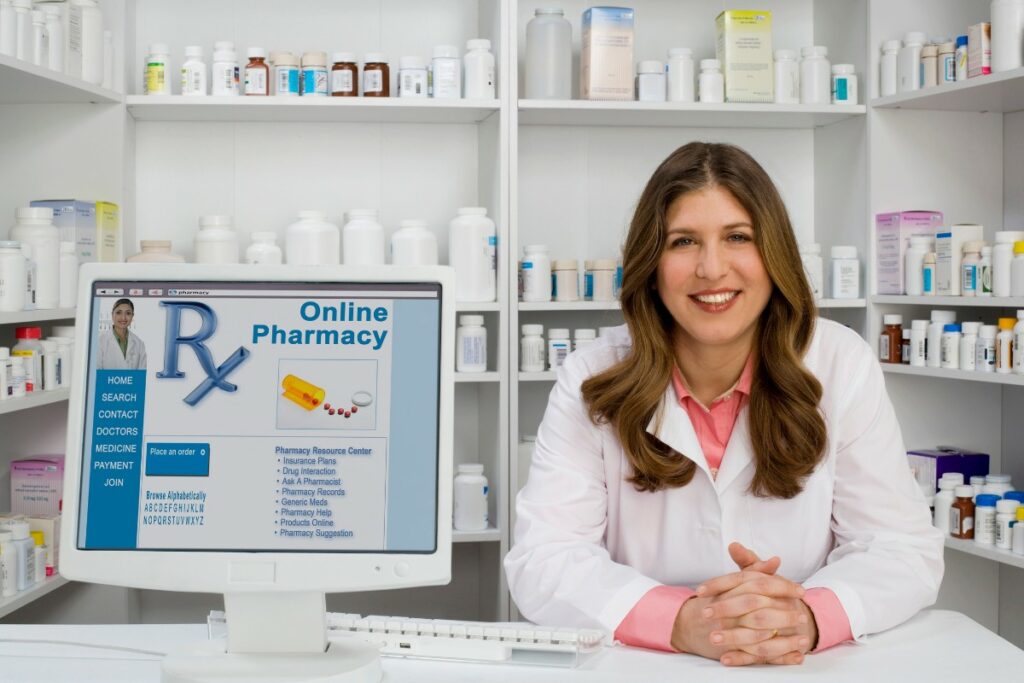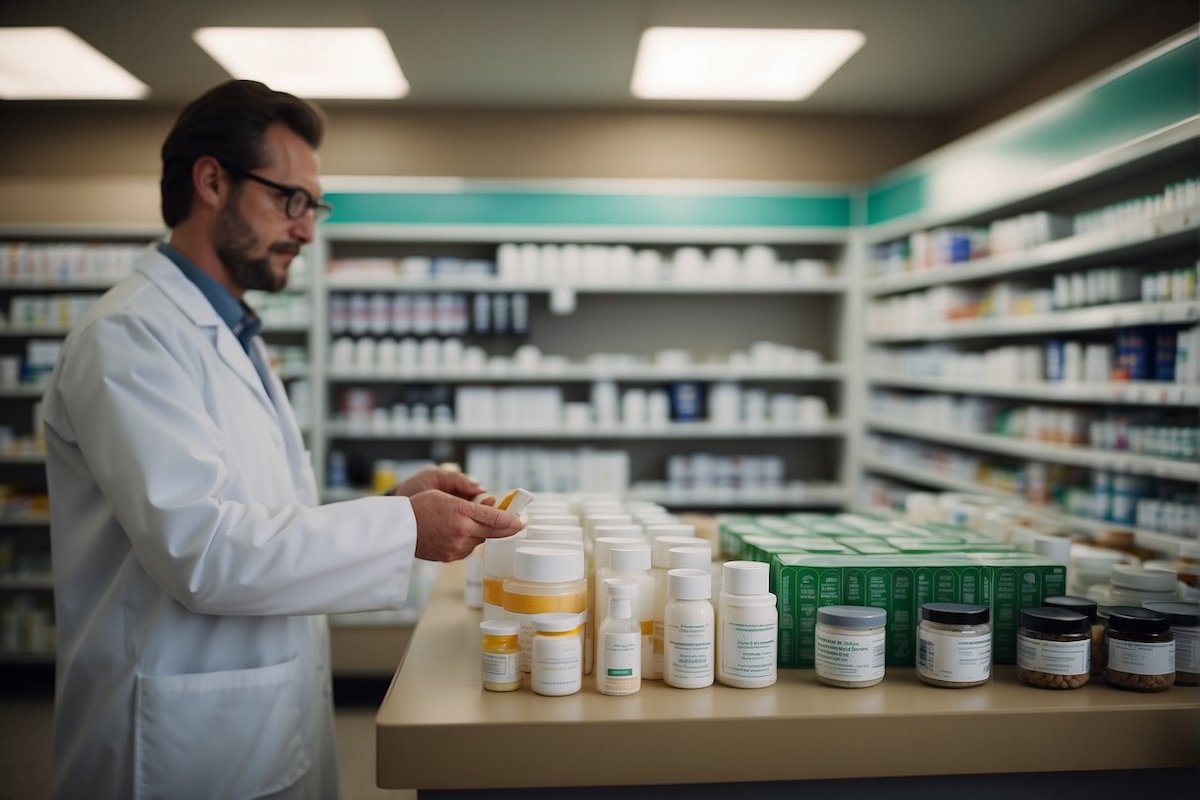In the ever-evolving field of healthcare, you might find yourself looking for a pharmacy alternatives that not only dispenses medication but also tailors its services to specific needs.
Pharmacy alternatives have emerged, focusing on individuals with cognitive, intellectual, and developmental disabilities.
These specialized services aim to simplify the management of medication through user-friendly packaging, the integration of electronic systems, and personalized customer support.
They ensure that you or your loved ones receive the care that’s needed with an added layer of convenience and safety.
Navigating medication regimens can be complex, especially when dealing with multiple prescriptions.
That’s where these pharmacies step in to help streamline the process.
They offer comprehensive solutions including medication adherence support, error reduction, and educational resources.
By offering a range of payment options like Medicare Part D and Medicaid, these alternatives are accessible, often alleviating the financial burden of healthcare expenses.
With a focus on improving outcomes and empowering clients to live their best lives, such pharmacies are redefining the role of a traditional pharmacy to be more than a place where prescriptions are filled.
Understanding Pharmacy Alternatives
When exploring alternatives to prescription medications, you have a variety of options ranging from natural remedies to over-the-counter (OTC) products.
1. Natural Remedies

Herbal Products and Supplements: You can find a wide range of natural remedies that include herbal products, vitamins, and dietary supplements.
Some popular choices include:
- Ginger: Often used for nausea
- Turmeric: May have anti-inflammatory properties
- Echinacea: Commonly used to prevent or reduce the severity of the common cold
However, it’s essential to consult with a healthcare professional before starting any herbal treatment, as natural doesn’t always mean safe.
2. Over-the-Counter Options

Non-Prescription Medications: OTC options are medications that you can purchase without a prescription, which are used to treat many common ailments.
Here’s a brief list of what you might choose for certain conditions:
- Pain Relief: Acetaminophen, Ibuprofen
- Cold and Allergy: Antihistamines, Decongestants
- Digestive Issues: Antacids, H2 blockers
Remember to read labels carefully and follow dosage recommendations when using OTC medications, and consult your pharmacist with any questions or concerns.
Economic Impact of Alternative Pharmacies
The emergence of alternative pharmacies offers you new avenues to access medications potentially at lower costs while prompting traditional pharmacies to revise their pricing.
Cost-Effective Solutions
When you turn to alternative pharmacies, you might find generic drug options that are identical in active ingredients to brand names but come at a fraction of the cost.
These alternatives often bypass marketing and exclusivity costs, passing savings onto you.
- Bulk Purchasing: You benefit from economies of scale which can drive down prices.
- Direct-to-Consumer Sales: Fewer intermediaries in the supply chain can result in lower costs for you.
Insurance Considerations
Your choice of pharmacy could affect your insurance coverage, so it’s important to verify benefits ahead of time.
- In-Network vs. Out-of-Network: Understand your insurer’s network to ensure the alternative pharmacy is covered.
- Reimbursement Rates: Alternative pharmacies may offer competitive cash prices that can, at times, be cheaper than insurance copays.
Regulatory Aspects of Pharmacy Alternatives
In this section, you’ll learn about the regulatory environment for pharmacy alternatives, particularly the legal framework that governs them and the measures in place for safety and quality control.
Legal Framework
The legal parameters for pharmacy alternatives are founded on both federal and state regulations.
Entities such as the Food & Drug Administration (FDA), the Drug Enforcement Agency (DEA), and the Centers for Medicare & Medicaid Services (CMS) set the standards for pharmacy operations.
Your adherence to these laws ensures that pharmacy alternatives operate within the required legal boundaries.
State-specific regulations are overseen by bodies such as the National Association of Boards of Pharmacy (NABP), which means that you’ll need to understand the laws pertaining to the particular state where the pharmacy services are provided.
Safety and Quality Control
Ensuring the safety and efficacy of pharmacy alternatives is paramount.
This involves a stringent quality control process that aligns with established pharmacy best practices.
Whether it’s through therapeutic interchange programs, which must receive approval from the prescribing practitioner, or adhering to the pharmacy’s own policies and procedures, safety is at the forefront of providing alternative pharmaceutical options.
It is your responsibility to ensure that these practices meet the standards of the Board of Pharmacy regulations, thereby safeguarding patient care.
Technological Advances in Pharmacy
Advancements in technology are continually reshaping how you access and utilize pharmacy services.
Here’s how two pivotal innovations are making a difference in your healthcare routine.
Telemedicine

Telemedicine has revolutionized your healthcare experience by providing remote clinical services.
You can now have live consultations with healthcare professionals via video calls, and get professional advice without leaving your home.
This technology is not only convenient but also essential for those with mobility issues or those living in remote areas.
E-Prescriptions and Digital Pharmacies

E-Prescriptions streamline the process of getting your medication.
Your doctor can send prescriptions directly to your pharmacy electronically, minimizing the risk of errors associated with handwritten prescriptions.
Additionally, digital pharmacies allow you to manage your prescriptions online.
This means you can:
- Order refills from your phone or computer.
- Have your medication delivered to your doorstep.
- Access a digital record of your medication history for easy reference.
Implications for Public Health
In exploring pharmacy alternatives, your understanding of their impact on public health is crucial.
These alternatives primarily influence Access to Medication and Education and Awareness.
Access to Medication
You have a right to reliable and timely access to medications.
Pharmacy alternatives can either alleviate or exacerbate pharmacy deserts, areas where pharmacy services are scarce.
On one hand, innovative pharmacy models, like mobile pharmacies or online prescription services, can reduce barriers and increase convenience.
On the other hand, without proper regulation, these alternatives might lead to unequal distribution of pharmacy services, potentially ignoring underprivileged areas.
Education and Awareness
Your health literacy is paramount.
Pharmacy alternatives have the potential to enhance education and awareness regarding medication use and health practices.
Community-based pharmacists often serve as accessible health care figures who provide critical information about disease prevention and management.
However, without face-to-face interactions, as is common with some pharmacy alternatives, there’s a risk of losing this valuable direct consultation, which can affect how well you understand your own health care needs.
Key Takeaways
- Mail-Order Pharmacies: With the evolution of pharmacy services, there is a rise in mail-order options.
- Pharmacists are adapting to support you in understanding the intricacies of online and mail-order pharmacy licensing.
- Prescription Alternatives: You have alternatives to prescription medications available.
- Many Americans seek natural alternatives to avoid potential long-term side effects and manage the cost of healthcare.
- Drug Shortages and Substitutes: In case of shortages, like that of Ozempic, you can consider alternatives.
- For Type 2 diabetes, an oral alternative containing the same active ingredient may be available.
- Understanding Costs: It’s critical for you to understand the role of Pharmacy Benefit Managers.
- Also, understand how prescription drug spending impacts overall healthcare costs.
- This knowledge can help you find cost-effective solutions for your prescriptions.
- Saving on Medications: You can save money on medications like Januvia for Type 2 diabetes by exploring different pharmacies, using coupons, considering alternative medications, or seeking patient assistance programs.

